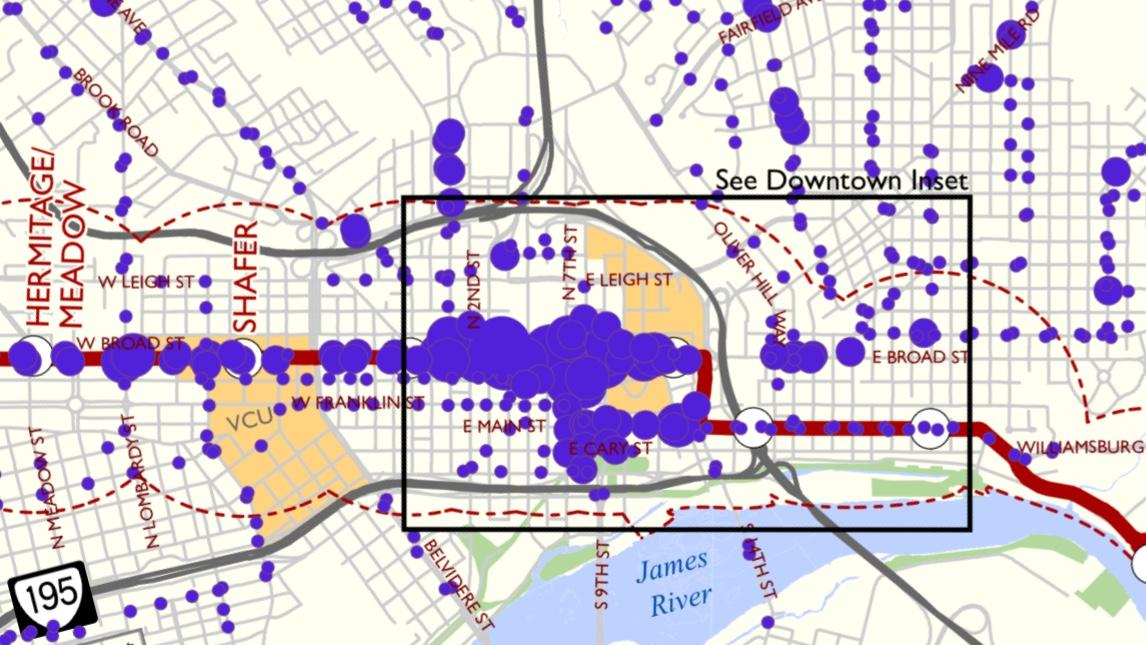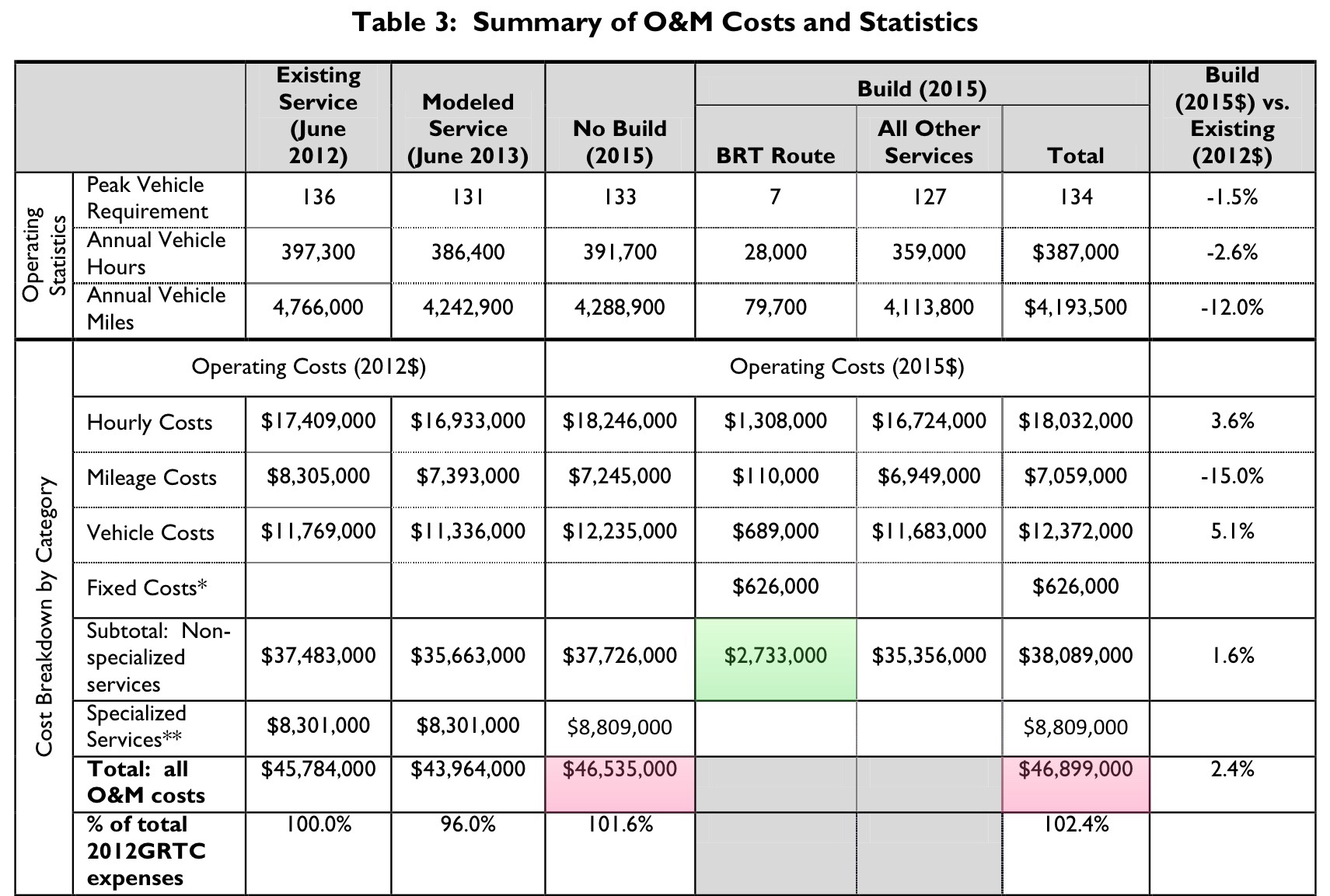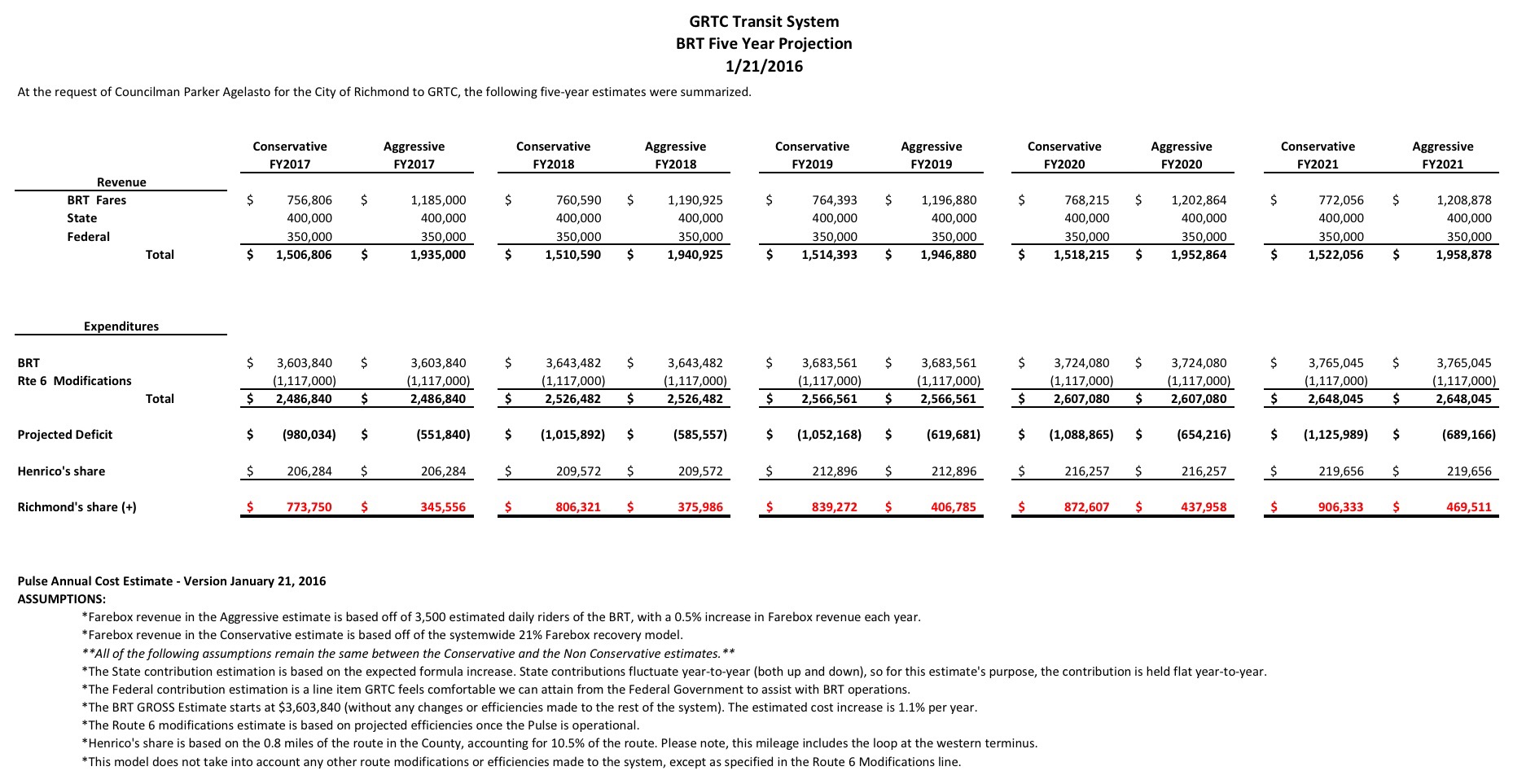BRT FAQ #010: What’s it cost to operate?
We know how much it’ll be to build, but how much will come out of our pockets annually? The City’s pockets? Anyone’s pockets!

Last year we covered how much the BRT would cost to build, but how much will this dang thing cost to run?
First, a little history
In 2013, the estimated cost of operating a Broad Street BRT was $2.7 million per year.
The original TIGER grant application, submitted back in 2014, said that “the incremental additional operating costs associated with the Broad Street BRT project will be about $400,000 in 2015 dollars.” The TIGER application got that number (which is significantly less than $2.7 million) from the 2013 Broad Street Rapid Transit Study, specifically this table:

Check out the green box. That’s the real, true, total estimated cost of running a Broad Street BRT: about $2.7 million. Back in 2013, they hoped to make up most of that by getting some cost savings out of the other, non-BRT line items of “hourly costs,” “mileage costs,” and “vehicle costs.” If you look at the difference between the two pink squares1, that’s the study’s estimate of additional cost of making a BRT: $364,000–the amount the TIGER grant referenced.
So what’s it going to cost, for real for real?
In 2016, the estimated cost of operating a Broad Street BRT is $3.6 million per year.
Ahead of Council’s planned vote on the development agreement2, (and a couple inquiries from Councilfolk), GRTC released this five-year operational cost estimate:
Total annual operational costs for the Pulse are estimated at $3.6 million with those costs covered in the following ways/amounts:
- Route 6 cost savings3: $1,117,000 • 31%
- Rider fares: $756,806 • 21%
- State: $400,000 • 11%
- Federal: $350,000 • 10%
Leaving $980,034, which means for at least the next five years the Pulse will operate at a deficit. That deficit will be made up by Richmond and Henrico in the following split:
- Richmond: $773,750 • 21%
- Henrico: $206,284 • 6%4
Since 2013, the project has gone through some changes in design and scope, and we’ve now got an estimated operating cost of $3.6 million–$900,000 more than the $2.7 million we thought it’d be back in 2013. Plus, remember those cost savings? They either no longer exist or are not included in the most recent estimate provided by GRTC. Now, a significant portion of the costs are covered by federal and state money5 plus savings from rejiggering Route 6.
An opinion: I think it’s unfair to pin the loss of those cost savings squarely on a failure to properly anticipate BRT operating costs. All kinds of things, including GRTC expanding and improving service, could go into losing some of those planned cost savings.
A little context
Before you sputter and gasp too hard at the BRT costs and the fact that it will not cover those costs, some perspective (after which you can feel free to sputter and gasp all you want):
- Total operating budget for GRTC in 2015: $45,601,812
- Total passenger revenue in 2015: $15,187,488 (33% of their operating budget)
- Richmond’s non-departmental budget line item for GRTC in 2015: $12,300,000 (27% of GRTC’s total budget)
- The new, anticipated BRT cost for Richmond is 6.3% of what the City currently gives GRTC
- The cost of running GRTC without building the BRT and the the cost of running the GRTC with the BRT. ↩
- They were supposed to vote on it at the January 25th Meeting, but that got cancelled due to a foot of snow falling from the sky. Presumably it will move to the agenda for February 8th’s meeting. ↩
- This is the cost of the Pulse before you account for the planned efficiencies of rejiggering the existing Route 6. This route duplicates some of what’s planned for the BRT, so by changing up some things they can eliminate some costs. ↩
- How’d they come up with this split? I wondered too so I asked the GRTC’s Carrie Rose Pace. She said, “Henrico’s share is calculated by multiplying the total cost by 10.5% and deducting their pro-rata share for farebox recovery to give a net cost.” 10.5% is the total amount of the BRT in Henrico, by the way. ↩
- This was always part of the plan, just fewer dollars from those government fat cats. ↩
-
Recommend this
on Facebook -

Report an error
-

Subscribe to our
Weekly Digest





There are 2 reader comments. Read them.